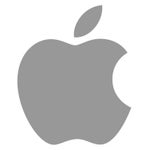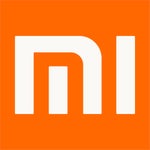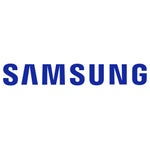News
iPhone 17 Pro Reverse Wireless Charging: Why It’s Unlikely
iPhone 17 Pro Reverse Wireless Charging: Why It’s Unlikely
Rumors said the iPhone 17 Pro might let you charge your AirPods or Apple Watch directly from your phone. Yet, a closer look at Google’s Pixel 10 launch and the underlying Qi2 magnetic standard shows why this feature is highly unlikely to land on Cupertino’s devices. Magnetic alignment magnets, thermal constraints, and physical design trade-offs create a trifecta of technical hurdles. As Apple continues to champion MagSafe a variant of the Qi2 standard it helped open-source the iPhone 17 Pro reverse wireless charging dream faces formidable barriers. In this article, we reveal the key reasons why Apple will probably skip this capability and what alternative solutions might emerge.
Rumor Breakdown: Reverse Wireless Charging on iPhone 17 Pro
Recent Chinese reports claimed the upcoming iPhone 17 Pro and Pro Max would introduce reverse wireless charging a first for any Apple smartphone.
This feature would mirror Samsung’s PowerShare, enabling convenient accessory charging without cables. While tantalizing, Apple’s absence from prior reverse-charging support suggests deeper limitations beyond mere feature planning.
Lessons from Google’s Pixel 10 Family
Google’s Pixel 10 series offers a cautionary tale. To implement full Qi2 wireless charging with built-in magnets akin to Apple’s MagSafe Google removed its Battery Share reverse charging feature entirely. The company explained that “the magnet set creates a strong connection with the charger but has a physical limitation for reverse wireless charging”. This design decision highlights the fundamental conflict between magnetic alignment and bidirectional power flow.
Core Technical Barriers: Magnets, Heat, and Space
Magnetic Interference
Qi2 relies on a ring of magnets to ensure perfect alignment between charger and device. These magnets generate electromagnetic fields that obstruct reverse current flow, creating dead zones that prevent effective power sharing.
Thermal Management
Wireless charging is inherently inefficient, with up to 60% energy lost as heat. Attempting reverse charging in a magnet-packed chassis would exacerbate thermal stress, risking battery health and user safety.
Physical Space Constraints
Modern smartphones tightly pack components magnet arrays, charging coils, batteries, and logic boards. Reserving room for reverse-charging coils and circuits would compromise device slimness or force trade-offs in battery capacity, counter to Apple’s design ethos.
Apple’s MagSafe Legacy & Ecosystem Impacts
Apple’s decision to open-source the MagSafe magnetic design under the Wireless Power Consortium’s Qi2 standard locked in a magnetic-first approach. MagSafe accessories, including wallets and stands, rely on precise magnetic alignment. Introducing reverse charging would require significant hardware divergence from the industry standard, jeopardizing accessory compatibility and the broader MagSafe ecosystem.
Potential Workarounds and Future Directions
While mainstream reverse wireless charging appears off the table, industry insiders suggest alternative pathways:
-
Smart Connectors: Physical pogo-pin contacts for accessory charging, similar to iPad Pro’s accessories port.
-
Next-Gen Qi Protocols: Future wireless charging standards may address magnetic interference, enabling bidirectional power transfer without space or thermal penalties.
-
Optimized Power Sharing Chips: Custom silicon that multiplexes charging coils for both incoming and outgoing currents, though such solutions remain years from commercial rollout.
What It Means for iPhone 17 Pro Owners
Prospective iPhone 17 Pro users should focus on forthcoming MagSafe improvements faster wireless charging, enhanced magnetic grip, and a richer accessory marketplace. Reverse wireless charging, while appealing for emergency top-ups, serves niche scenarios compared to daily charging convenience. Apple’s emphasis on perfecting core experiences suggests MagSafe evolution will deliver more consistent benefits.
Frequently Asked Questions
Q1: Will any iPhone 17 model support reverse wireless charging?
Unlikely, as Qi2 magnetic systems and MagSafe alignment rings conflict with reverse-charging hardware requirements.
Q2: Why did Google drop reverse charging on the Pixel 10?
Pixel 10’s Qi2 magnets physically block reverse current paths, forcing Google to sacrifice Battery Share for magnetic charging reliability.
Q3: Can Apple implement reverse charging in future models?
Possible but would require new wireless standards or proprietary hardware diverging from Qi2, which Apple has publicly endorsed.
Q4: What charging features will the iPhone 17 Pro actually include?
Expect up to 25W MagSafe charging, improved thermal management, and seamless integration with MagSafe accessories.
Q5: Are there third-party solutions for reverse wireless charging?
Some accessory makers may introduce docks or adapters, but integrated phone-to-phone reverse charging remains unlikely.
Related Articles
-
iPhone 17 Pro Battery Leak Reveals Key US vs China Design Differences
-
iPhone 17 Pro and Pro Max: A Deep Dive into the A19 Pro Chip and Geekbench Leaks
-
Leaked iPhone 17 Screen Protectors Reveal Display Size Differences Across Models
-
iPhone 17 Pro Rumored to Start With 256GB Storage (Offsetting a $50 Price Hike)
-
iPhone 17 Pro Leaks: Stunning Rear Redesign and Huge Camera Island to Redefine Smartphone Design
Conclusion
Despite persistent rumors, the iPhone 17 Pro reverse wireless charging capability is all but ruled out by the magnetic constraints of Qi2 and MagSafe technology. Google’s Pixel 10 experience confirms these trade-offs, underscoring why Apple will prioritize a refined MagSafe ecosystem over bidirectional power sharing. As wireless charging standards evolve, true reverse charging may return yet for now, Apple chooses alignment precision and safety over experimental features. What matters most: reliable, fast charging you can count on daily. Share your thoughts on MagSafe’s future and whether Apple should revisit reverse charging when new standards arrive below!












